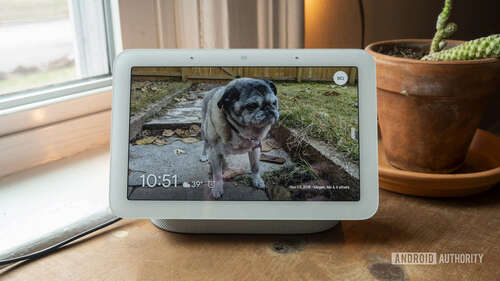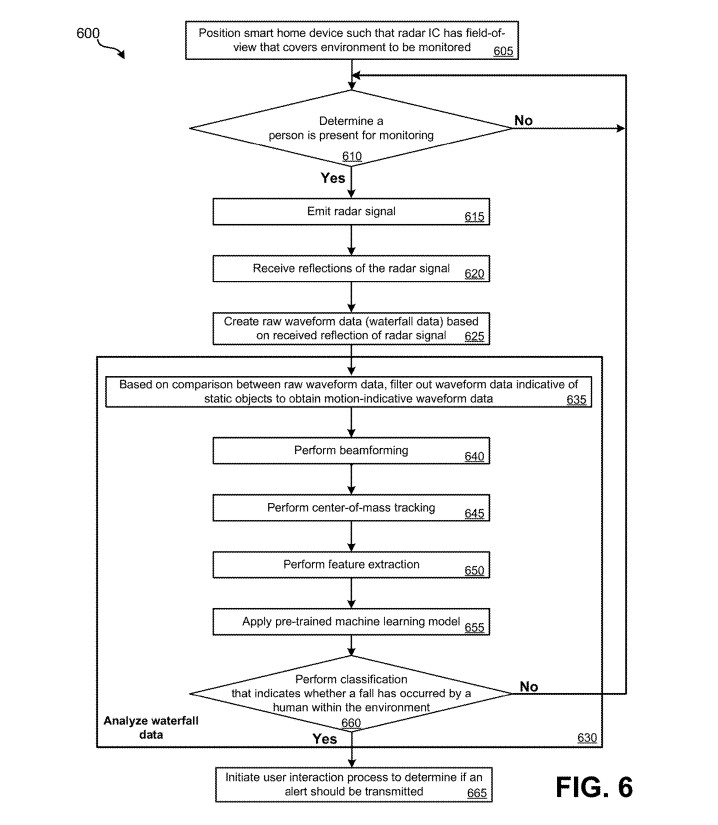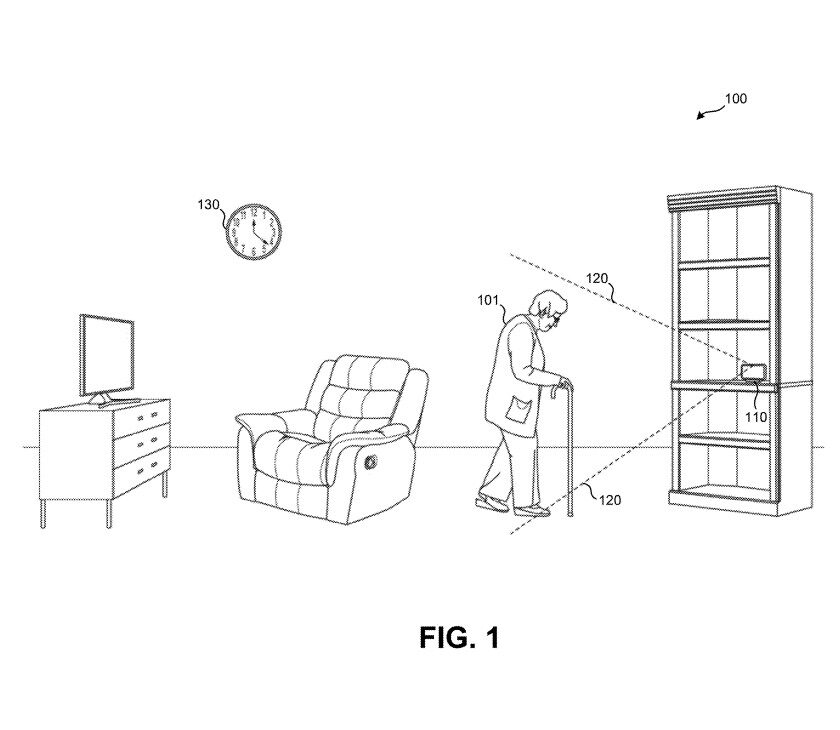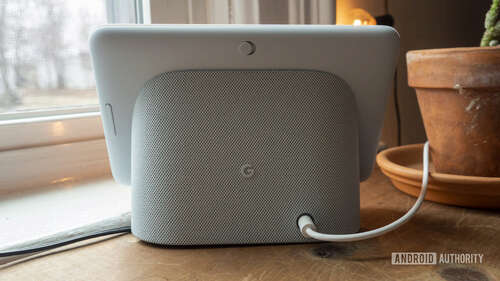
Jimmy Westenberg / Android Authority
TL;DR
- Google has filed a patent for fall detection via smart home devices using a radar system.
- The feature would notify an emergency contact or emergency services in the event of a fall.
- This suggests that the radar-equipped second-generation Nest Hub could gain fall detection support.
Fall detection is one of the most important features on smartwatches and trackers today, allowing elderly people and other users to get help in the event that they’ve fallen and can’t get back up. Now, it looks like Google could be thinking about bringing this feature to its Nest Hub line.
The company filed a patent with the US Patent and Trademark Office (USPTO) titled ‘Privacy-preserving radar-based fall monitoring.” This patent describes the use of a stationary “smart home device” or “home assistant device” that uses radar waves to detect whether a nearby person has fallen.
How would fall detection by a Nest Hub work?
Once the device detects that a person has taken a fall (using center-of-mass tracking and machine learning), it can then announce this fact and request an audio response from the person. If the user confirms they’ve fallen or no timely response is received, the smart home device can take action. This action includes sending an alert via Wi-Fi to an emergency contact.
“A fall was detected at Margret’s home and she indicated that she needs help,” reads an example of this alert according to Google’s patent. Google says the recipient might be required to acknowledge receipt of the alert and that the notification could be sent to additional emergency contacts if the primary contact doesn’t acknowledge receipt of it. Google’s patent also notes that the smart home device could initiate a call between the fallen user and their emergency contact.

The search giant also outlined the possibility of the smart home device alerting local emergency services (e.g. the local fire department) and initiating a call with them instead. Google says a smart device that’s successfully detected a fall could notify other smart home devices in a residence, allowing other people in the household to assist the fallen person.
What if the smart home device falsely detected a fall? Well, the user can simply respond to say they’re fine. “Okay. I won’t contact anyone. I hope you are okay,” the device could answer. The company also suggests the possibility that fall detection can be disabled when two or more people are detected, reasoning that another person is likely able to provide “significantly more help” to a fallen person than a smart home device.
Google adds that this tech could be used to monitor the pace of someone’s walking:
As the monitored person’s walking pace decreases, a determination can be made that she is becoming more feeble and more likely to fall. Over a significant amount of time, such as weeks, months, or even years, a trend in the monitored person’s walking pace can be determined and output, such as to an emergency contact.

So what kind of smart home product could handle this tech? Well, Google’s second-generation Nest Hub smart display comes with a Soli radar system, making it the ideal, commercially available candidate for a radar-powered fall detection feature. The Nest Hub’s Soli radar is currently used for Motion Sense gesture controls and sleep tracking.
Furthermore, the patent specifically notes that Infineon’s BGT60TR13C radar chip could be used for this feature. This seems to be the same radar chip used in the Google Pixel 4 series and second-generation Nest Hub.
Google also notes in the patent that the product could have a touchscreen in addition to the expected speaker, microphone, and radar system. One of the filed images (seen above) suggests that we’re indeed looking at a Nest Hub of sorts at the very least.
Why a smart home device for fall detection?

Jimmy Westenberg / Android Authority
Fall detection is already available on a variety of wearables, but Google notes that these devices need to be charged and worn properly:
For at least some of the population that is most at-risk for falling, such proper use may be difficult to sustain. Therefore, it may be desirable to monitor a person at-risk for falling without requiring the person to wear any wearable device.
The company also ruled out a camera for fall detection due to privacy concerns, especially if you want to detect falls in a bathroom or bedroom.
The one significant downside to this patented approach is that falls won’t be detected if the person and smart home device are in different rooms. This would necessitate multiple devices to ensure that falls are detected in each room. Despite this notable downside, this would still be a handy, potentially life-saving use of the Nest Hub’s radar system, especially for elderly people who are living on their own.
We have to stress that this is just a patent, though, so there’s no guarantee that we’ll actually see this feature come to a second-gen Nest Hub or another Google device.

